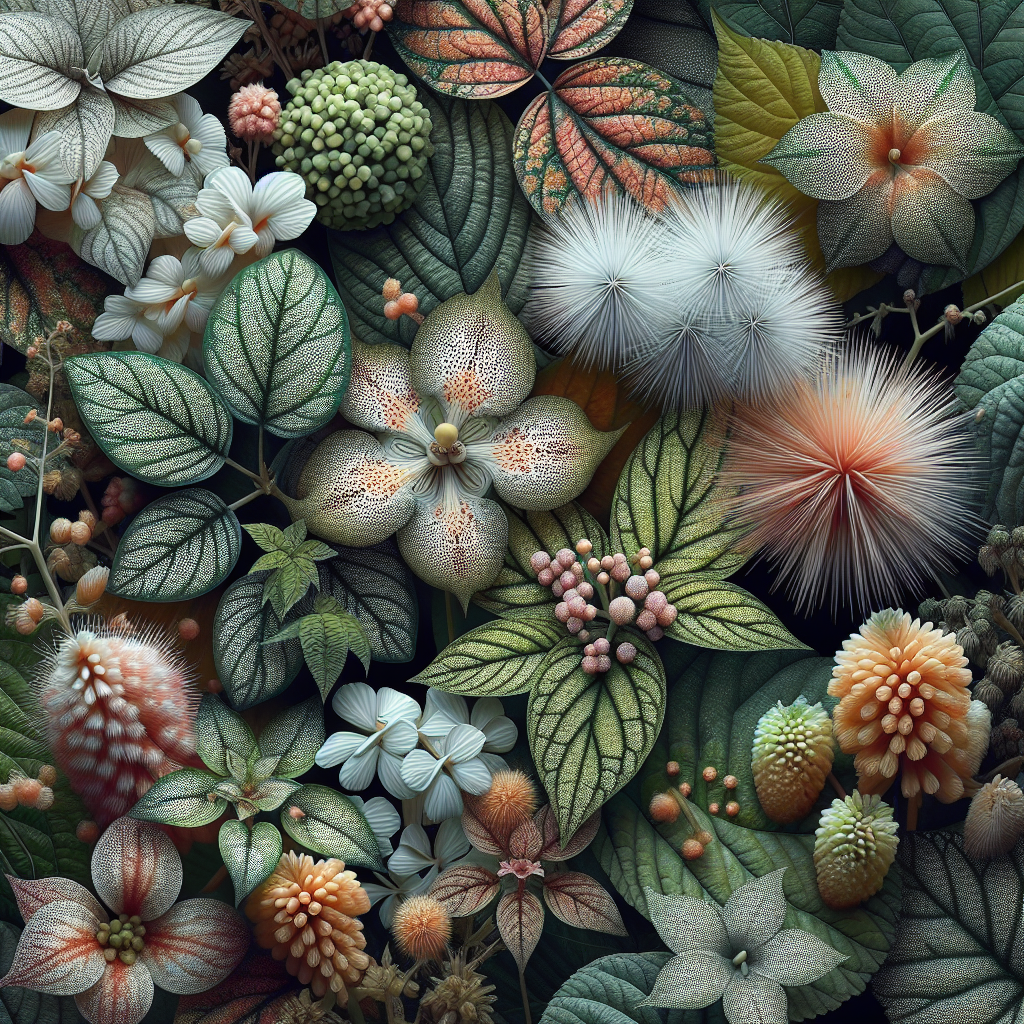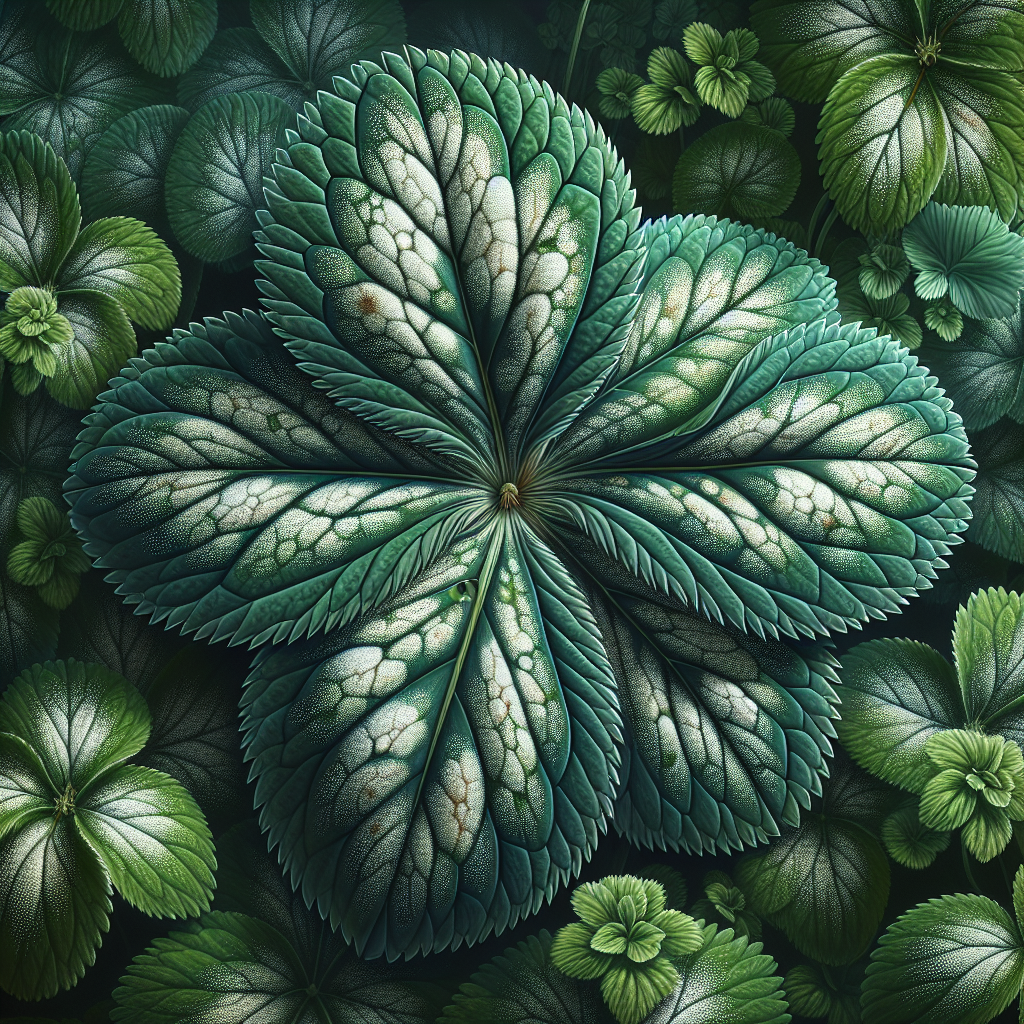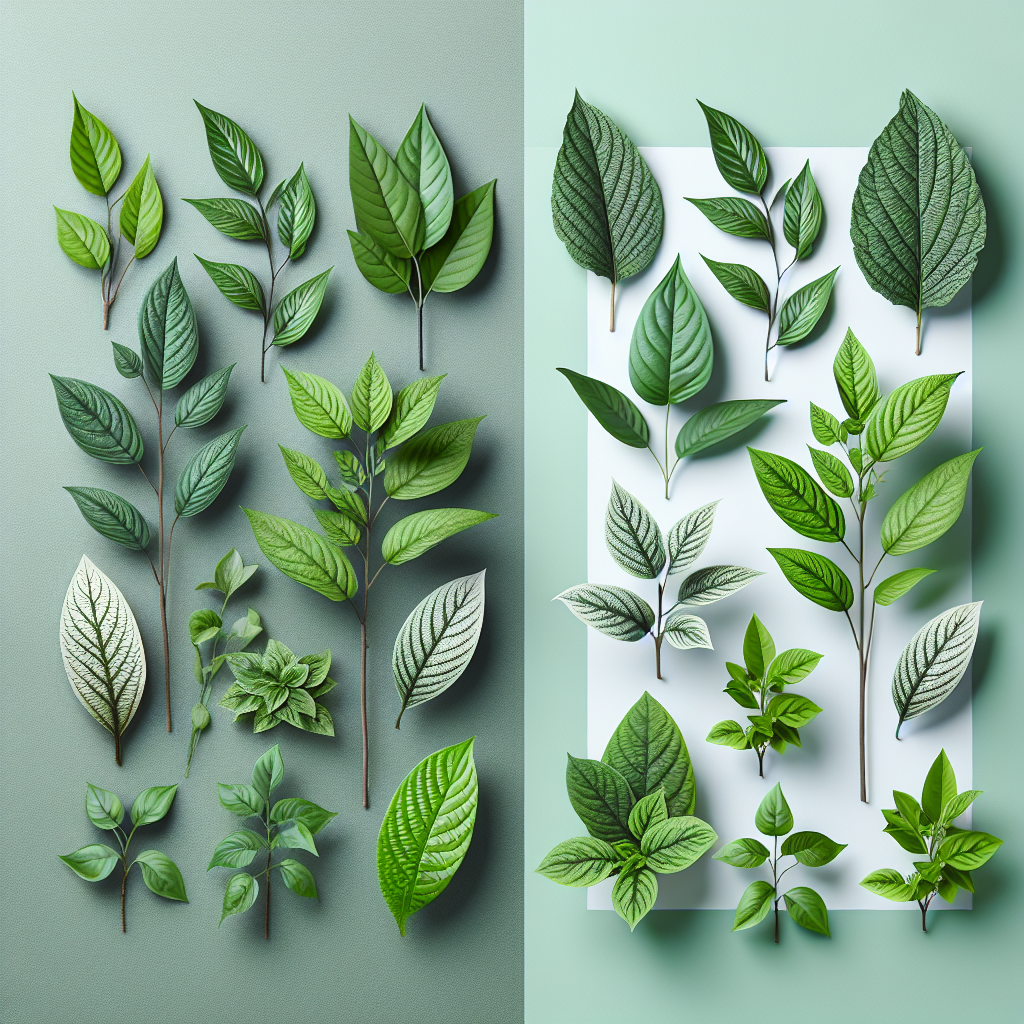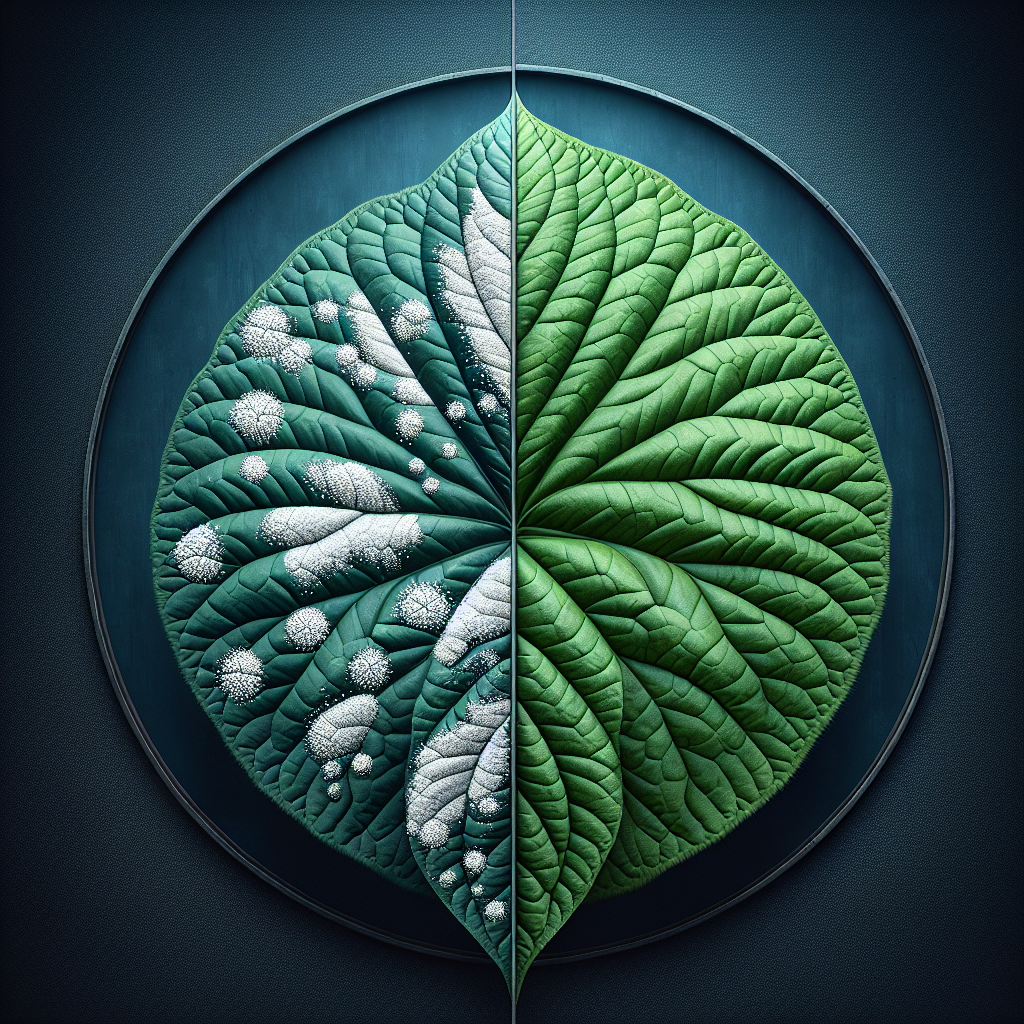Understanding White Spots and Leaf Whitening: What’s the Difference?
Introduction
Welcome to the wild world of plant care, where even the most innocent-looking leaves can hide a myriad of problems. If you’ve ever gazed at your beloved greens only to spot those pesky white spots, or noticed your leaves turning a ghostly white, you might be wondering: what on earth is going on? Fear not, fellow plant parent! Today, we’re diving deep into the mysterious realm of white spots vs. leaf whitening-understanding the difference gap.
First things first-let’s clarify what we mean by white spots and leaf whitening. While they may seem like two peas in a pod, they are as different as apples and oranges. Understanding these differences can help you diagnose plant health issues more effectively and take action before it’s too late.
Did You Know? White spots on plant leaves are often caused by fungal infections, such as powdery mildew, which affects approximately 10% of all plant species globally. For more info on this common issue, check out Planet Natural.
So why should you care about distinguishing between these two conditions? Well, for starters, each one has its own set of causes and treatments. Whether it’s a case of leaf discoloration, stemming from nutrient deficiency in plants or environmental stress factors, or an outright pest infestation sign leading to leaf bleaching symptoms-knowing what you’re dealing with is half the battle.
This post will not only help you identify these issues but also provide practical tips for diagnosing plant problems effectively. After all, no one wants their garden looking like a horror movie set!
As we explore this topic further, we’ll touch upon:
- The nitty-gritty details of white spots and leaf whitening
- The importance of understanding these differences for effective treatment
- A peek into how this knowledge can enhance your SEO practices in gardening and plant care niches
So grab your gardening gloves (or just a comfy chair if that’s more your style), and let’s dig into the fascinating world of plant health!

Defining White Spots
Alright, let’s get into the nitty-gritty of white spots on leaves. These little buggers can show up uninvited, and understanding their characteristics is crucial for diagnosing plant health issues. So, what do white spots really look like? Well, they often appear as small, pale patches on the leaf surface, which can range from tiny flecks to larger blotches. Think of them as the plant's version of acne-definitely not a good look!
Characteristics of White Spots on Leaves
- Color: Typically white or pale yellow.
- Texture: Can be powdery or dry, depending on the cause.
- Location: Often found on the upper side of leaves but can also appear underneath.
- Spread: May start small but can rapidly increase in size if untreated.
Common Causes of White Spots
The causes of white spots are as varied as a box of chocolates. Here’s a rundown:
- Pests: Spider mites and mealybugs are notorious for leaving behind white spots as they suck the life out of your leaves.
- Diseases: Fungal infections like powdery mildew are prime suspects. In fact, approximately 85% of plant diseases are caused by fungi! Source.
- Nutrient Deficiencies: A lack of essential nutrients can lead to chlorosis in plants, which might manifest as those pesky white spots.
Pests (e.g., Spider Mites, Mealybugs)
Pest infestations are like an uninvited party at your plant's expense! Spider mites create fine webs that may go unnoticed until it’s too late. Mealybugs, on the other hand, leave behind a sticky residue that’s hard to miss. Keep an eye out for these critters; they often signal more significant issues lurking beneath the surface.
Disease (e.g., Powdery Mildew)
If you think your plants might be suffering from powdery mildew, you’re not alone. This fungal infection thrives in warm and humid conditions and can quickly spread if left unchecked. It’s like that one friend who just can’t take a hint to leave the party!
Nutrient Deficiencies
Nutrient deficiencies in plants can lead to leaf discoloration and changes in leaf appearance. For example, a lack of magnesium often results in yellowing between the veins while leaving those veins green-definitely not the aesthetic we’re going for here!
Examples of Plants Affected by White Spots
You might be wondering which plants are most susceptible to these pesky spots. Here’s a quick list:
- Squash Plants: Often fall victim to powdery mildew.
- Tropical Plants: Such as spider plants and peace lilies can show signs of pest infestations.
- African Violets: Known for their beautiful blooms but also prone to fungal infections.
Key Takeaway: Identifying white spots vs. leaf whitening causes is essential for effective treatment strategies. Early detection means healthier plants and less stress for you!
If you’re seeing these symptoms pop up in your garden or houseplants, don’t panic! Instead, take action by diagnosing plant problems effectively and treating them promptly-because no one wants their green babies looking like they just walked off a horror movie set!

Understanding Leaf Whitening
Now that we've tackled the notorious white spots, let's turn our attention to the equally perplexing phenomenon of leaf whitening. If white spots are the acne of the plant world, then leaf whitening is like a bad sunburn-painful and definitely not a good look! But what exactly does leaf whitening entail?
Characteristics of Leaf Whitening
Leaf whitening often manifests as a general lightening of color across the leaf surface, giving it a bleached appearance. This condition can be subtle or severe, depending on its cause. Here are some key characteristics:
- Color Change: Leaves shift from vibrant green to pale yellow or even white.
- Texture: The surface may appear crispy or dry, especially in severe cases.
- Location: Typically affects older leaves first, but can spread to younger foliage if left unaddressed.
- Impact on Photosynthesis: Affected leaves struggle to perform photosynthesis effectively, leading to overall plant health decline.
Common Causes of Leaf Whitening
The causes of leaf whitening are as diverse as a buffet line at a family reunion! Here’s what you need to know:
- Environmental Stress: Factors such as excessive sunlight can lead to sunburn, causing those unfortunate white patches.
- Cultural Practices: Over-fertilization can disrupt nutrient balance, leading to symptoms like chlorosis in plants.
- Nutrient Deficiencies: A lack of essential nutrients like nitrogen or magnesium can result in leaf bleaching symptoms.
- Fungal Infections: Certain fungal diseases may also contribute to discoloration and weakening of foliage.
Environmental Stress (e.g., Sunburn, Temperature Fluctuations)
If your plants are getting too much sun-think beach day without sunscreen-they might end up with burnt leaves. This is especially common in regions with harsh sunlight or sudden temperature changes. Just like humans need shade and hydration during summer outings, plants require protection from intense sunlight.
Cultural Practices (e.g., Over-Fertilization)
Piling on fertilizer might seem like a good idea for your plants’ growth. However, just like too much caffeine can leave you jittery, over-fertilization can lead to nutrient imbalances. This excess can cause chlorosis and ultimately lead to those unsightly white patches. Always follow recommended guidelines for fertilizing your green friends!
Examples of Plants Affected by Leaf Whitening
You might be curious which plants are more likely to experience leaf whitening. Here’s a quick rundown:
- Tropical Plants: Such as Bromeliads, often suffer from sunburn due to their native habitat's filtered light conditions.
- : Like Aloe Vera, which can develop bleaching if exposed to harsh direct sunlight for prolonged periods.
- : Particularly sensitive ferns may show signs of stress quickly when their environment changes suddenly.
Key Takeaway: Understanding leaf whitening causes helps you manage plant stress factors effectively. Early intervention leads to healthier plants and happier gardeners!
If you notice your plants exhibiting these symptoms, don’t fret! Diagnosing plant problems promptly and adjusting their care routine will go a long way toward restoring their former glory. Remember: knowledge is power when it comes to keeping your garden thriving!

Comparative Analysis: White Spots vs. Leaf Whitening
Welcome to the showdown of the century: white spots vs. leaf whitening! In this corner, we have the pesky white spots, and in the opposite corner, the ghostly leaf whitening. While both can send shivers down your spine as a plant parent, they each come with their own unique set of characteristics and challenges. Let’s dive into this comparative analysis to better understand these two phenomena!
Differentiating Features Between White Spots and Leaf Whitening
First up, let’s lay out the key differences between these two plant issues:
| Feature | White Spots | Leaf Whitening |
|---|---|---|
| Appearance | Pale patches or flecks on leaves | General lightening or bleaching of leaf color |
| Texture | Can be powdery or dry | Crispy or dry surface in severe cases |
| Causes | Pests, diseases, nutrient deficiencies | Environmental stress, over-fertilization, nutrient deficiencies |
| Photosynthesis Impact | Mild disruption if untreated | Severe disruption leading to overall plant health decline |
| Treatment Approach | Pest control and disease management strategies required | Cultural practices adjustment and stress management needed |
This comparison highlights that while both conditions can lead to leaf discoloration , their underlying causes and treatment methods differ significantly.
Diagnostic Approaches for Identification
The first step in diagnosing whether your plant is suffering from white spots or leaf whitening is a thorough inspection. Here’s how you can approach it:
- Visual Inspection: Look closely at your leaves for signs of pests or fungal growth.
- Tactile Examination: Gently touch the leaves to feel for texture differences; powdery spots indicate fungal issues.
- Nutrient Check: Assess your fertilization routine to rule out nutrient deficiencies.
If you’re still unsure after a visual check, don’t hesitate to reach out for additional help!
Laboratory Testing Options (if applicable)
If you suspect a serious issue but can't pinpoint it through visual inspection alone, consider laboratory testing. This can help identify specific pathogens or nutrient imbalances. Many local agricultural extensions offer services that test soil and leaf samples for common plant diseases.
Impact on Plant Health and Growth Potential
The impact of these conditions on your plants can vary widely:
- White Spots: If left untreated, they can lead to weakened plants susceptible to further pests and diseases.
- Leaf Whitening: This condition often results in reduced photosynthesis efficiency, which can stunt growth significantly.
- Long-term Effects: Both conditions can lead to decreased vitality in plants over time if not addressed promptly.
Key Takeaway: Understanding white spots vs. leaf whitening-understanding the difference gap is crucial for effective diagnosis and treatment strategies. Early detection leads to healthier plants and a thriving garden!
If you spot either white spots or leaf whitening in your plants, don’t just stand there! Get proactive about diagnosing plant problems effectively so you can treat them before they spiral out of control. Your green friends will thank you!

Treatment and Prevention Strategies
Now that we've laid the groundwork for understanding white spots vs. leaf whitening-understanding the difference gap, let’s roll up our sleeves and dive into some effective treatment and prevention strategies. After all, no one wants their beloved plants looking like they just survived a zombie apocalypse!
Treating White Spots on Plants
When it comes to tackling those pesky white spots, your approach will depend on the underlying cause. Here’s a breakdown of effective treatment strategies:
- Pest Control Methods:
- Insecticidal soaps can help eliminate soft-bodied insects like mealybugs.
- Neem oil is a fantastic organic option that disrupts pest life cycles.
- Introduce natural predators like ladybugs to keep pest populations in check.
- Disease Management Strategies:
- Fungicides can be effective against fungal infections like powdery mildew.
- Ensure proper air circulation around plants to minimize humidity levels.
- Remove affected leaves promptly to prevent spread.
- Nutrient Management Practices:
- Test soil for nutrient deficiencies and amend accordingly.
- Use balanced fertilizers to promote healthy foliage growth.
- Chemical vs. Organic Solutions:
While chemicals can provide quick fixes, organic solutions are often safer for your garden ecosystem. Consider using organic options whenever possible!
- Adequate Watering and Soil Health Considerations:
Avoid overwatering, which can lead to root rot, while ensuring your plants have access to well-draining soil. Healthy roots lead to healthier leaves!
Treating Leaf Whitening
If your plants are suffering from leaf whitening, don’t despair! Here’s how you can restore their vibrant glory:
- Cultural Adjustments:
Modify watering schedules and environmental conditions based on plant needs. For instance, if your plant is getting too much sun, consider relocating it to a shadier spot.
- Adequate Shading Solutions:
If you notice sunburn symptoms, use shade cloths during peak sunlight hours or position taller plants nearby for natural protection.
- Nutrient Balance Strategies:
Avoid over-fertilization by following recommended guidelines. A balanced diet keeps your plants happy!
- Avoiding Over-Fertilization:
This is crucial; too much fertilizer can lead to nutrient imbalances causing leaf whitening symptoms. Stick to the plan!
- Selecting Appropriate Fertilizers:
Select slow-release or organic fertilizers tailored to specific plant needs for optimal results.
Key Takeaway: Understanding how to treat both white spots and leaf whitening symptoms, along with implementing effective prevention strategies, will keep your garden thriving and gorgeous!
If you spot any signs of distress in your plants, take action swiftly! Regular monitoring and timely interventions are essential for maintaining plant health. Remember: healthy plants equal happy gardeners!
The Role of SEO in Plant Care Content Creation
Alright, plant enthusiasts and SEO wizards, let’s talk about how to make your content shine brighter than a well-watered fern! When it comes to creating engaging plant care content, understanding the nuances of white spots vs. leaf whitening-understanding the difference gap is crucial, but so is optimizing that content for search engines. After all, what good is your masterpiece if no one sees it?
Optimizing Content for Keywords like "White Spots" and "Leaf Whitening"
First things first: keywords are your best friends in the digital jungle! By strategically incorporating keywords such as white spots, leaf whitening causes, and leaf discoloration, you can help your content climb the search engine ranks faster than a vine on a trellis. Here’s how to do it:
- Keyword Placement: Use your primary keyword naturally in headings, subheadings, and throughout the text. Aim for a keyword density of about 1-2%-enough to be impactful but not so much that it sounds forced.
- Semantic Keywords: Sprinkle in related terms like nutrient deficiency in plants and plant diseases identification. This helps search engines understand your content better.
- Meta Descriptions: Craft compelling meta descriptions that include your primary keyword. This is like your content’s first impression-make it count!
- Internal Linking: Link to other relevant articles on your site. For example, if you have a post on leaf spot treatment, link to it when discussing treatment options.
The Importance of Visuals in Engaging Content
You know what they say: a picture is worth a thousand words! In the realm of plant care, visuals can make or break your content’s effectiveness. Here’s how to leverage images:
Using Images to Illustrate Differences
A well-placed image can clarify complex topics like white spots vs. leaf whitening comparison. Use high-quality photos that show these symptoms side by side so readers can easily identify them.
Create Infographics for Better Understanding
If you want to go above and beyond, consider creating infographics that summarize key points about diagnosing plant problems or treatment strategies. Infographics are shareable goldmines that can drive traffic back to your site!
User Engagement Strategies
Your readers are more than just passive consumers; they’re part of a thriving community! Engage them with these strategies:
- Encouraging Comments and Questions: At the end of each post, invite readers to share their experiences with plant issues or ask questions about their own plants’ health.
- Loyalty-Building Through Informative Content: Consistently provide valuable insights into topics like identifying plant disorders. The more helpful you are, the more likely they’ll return for more!
- Email Newsletters: Consider sending out regular newsletters featuring tips on preventing white spots on plants, upcoming gardening trends, or Q&A sessions with experts.
Key Takeaway: Mastering SEO while creating engaging plant care content isn’t just beneficial-it’s essential! Optimize wisely to ensure your expertise reaches those who need it most.
If you want to grow your audience as effectively as those leafy greens in your garden, start implementing these strategies today! Your plants-and followers-will thank you!
Conclusion
As we wrap up our journey through the fascinating world of white spots vs. leaf whitening-understanding the difference gap, it's clear that distinguishing between these two conditions is more than just a gardening trivia question. It's essential for maintaining plant health and ensuring your green friends thrive!
Synthesis of Key Points Regarding White Spots vs. Leaf Whitening
To sum it up, white spots are often the result of pests, diseases, or nutrient deficiencies, whereas leaf whitening typically stems from environmental stressors or improper care practices. Recognizing these differences can be a game-changer in diagnosing plant problems effectively.
- White Spots: Look for pale patches indicating possible pest infestations or fungal infections.
- Leaf Whitening: Watch for overall bleaching that suggests stress from excessive sunlight or nutrient imbalances.
The Significance of Accurate Identification for Plant Health
Accurate identification is crucial not just for treatment but also for prevention. By understanding the unique causes behind each condition, you can tailor your care strategies and keep your plants looking their best. Regular monitoring and proactive care can help you avoid those dreaded horror movie scenarios in your garden!
Key Takeaway: Early detection and intervention are vital! The sooner you identify whether you're dealing with white spots or leaf whitening, the better equipped you'll be to treat them effectively.
If you find yourself facing these challenges in your garden, don't wait until it's too late! Equip yourself with knowledge, implement effective treatment strategies, and watch as your plants flourish like never before. Happy gardening!


Comments
Post a Comment